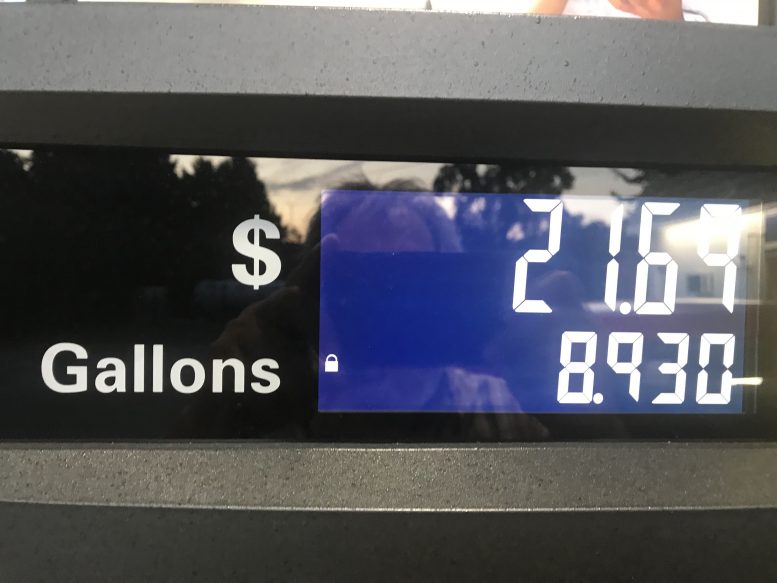From AAA of NORTHWEST OHIO
This fall when filling-up at the pump, the majority of motorists in Ohio and the rest of the Great Lakes and Central states will likely find savings of at least 25-cents/gallon compared to this summer.
This is despite Ohio’s recent gas tax increase of 10.5 cents per gallon, which took effect July 2019. Robust regional refinery utilization, healthy levels of gasoline stocks, the drop-off in gasoline demand after Labor Day and the move to winter-blend gasoline will contribute to pushing gas prices cheaper than they already are at the pump.
“The most expensive gas prices of the year are likely in the rear-view mirror,” said Kara Hitchens, AAA spokeswoman. “With crude oil selling for less than $60/bbl and gasoline demand anticipated to decrease in coming weeks, motorists in the Great Lakes and Central states should expect to find savings at the pump this fall.”
Since Memorial Day, the region has seen gasoline stocks and regional refinery utilization increase weekly, with the exception of a few weeks, according to Energy Information Administration’s reports. Moving into the fall, it is likely this trend will slow as demand hits a post-summer slump and refineries make the switch to winter-blend gasoline production and conduct planned maintenance.
While prices are likely to hit their lowest level of the year in coming months, that doesn’t mean the Great Lakes and Central States will see consistent decreases.
The region is well-known for price volatility with some states – especially Ohio and Michigan – seeing double-digit increases one week, followed by sizeable decreases the next.
Oil Dynamics
AAA forecasts crude prices to range between $50 and $60 per barrel this fall. That is a considerable drop from last fall when prices ranged between $60 and $75.
Why so cheap?
Current total domestic crude inventories sit at 438.9 million bbl, which is 31.5 million bbl higher than last year at this time. The continued glut of oil encouraged the Organization of the Petroleum Exporting Countries (OPEC) and its partners to extend their 1.2 million b/d production reduction agreement through the end of the year.
However, so far, reduced supply from OPEC and its partners has not led to a sustained higher price for crude. As always, hurricane season has the potential to cause declining gas prices to shoot back up.
This month, the National Oceanic and Atmospheric Administration predicted that 2019’s Atlantic hurricane season is expected to be above normal, with 10 to 17 named storms, including five to nine hurricanes. The mere threat of a hurricane making landfall can shutter domestic crude production, leading to spikes in crude and gasoline prices. In 2017, Hurricane Harvey caused the national gas price average to jump 30-cents in a matter of days.
Boost your Vehicle’s Fuel Efficiency
In addition to cheaper gas prices, there are other ways to save at the pump and boost your vehicle’s fuel efficiency this fall. According to the AAA Foundation for Traffic Safety, Americans drive an average 11,498 miles per year, and annual per-vehicle gasoline use totals approximately 462 gallons. Poorly maintained vehicles are less efficient and use more fuel.
To maintain fuel efficiency for your car, AAA recommends checking the owner’s manual for the recommended maintenance schedule, and keep the following in mind:
- Perform required maintenance as specified. Keeping tires properly inflated, moving components adequately lubricated, and ignition and emission systems in good operating condition will help ensure maximum fuel efficiency and extend the life of your vehicle.
- Change engine oil at the intervals indicated by the in-car maintenance reminder system or factory schedule. Use an “energy-conserving” oil that meets the vehicle manufacturer’s specifications.
- Keep tires inflated at the proper pressure. Use the figures on the tire information decal on the driver’s door jamb — not the one molded into the tire’s sidewall. Under-inflated tires reduce fuel economy and can be a safety hazard.
- Check the engine air filter at every oil change. A dirty filter won’t affect fuel economy on a modern fuel-injected car, but it will reduce engine performance.
- Engine spark plugs must be in good condition. Some types last for 100,000 miles, but others need to be replaced more often.
AAA ‘Pumps Up’ Distracted Driving Messaging
As drivers stop to fill up for gas, AAA is reminding them to put their phones down while driving.
AAA has placed important safety reminders aimed at changing attitudes and behaviors surrounding the deadly problem of distracted driving at unlikely places: gas pumps. AAA’s “Don’t Drive Intexticated.” initiative targets drivers who would never consider drinking a beer behind the wheel and, yet, regularly engage with mobile devices that dangerously take their eyes, hands and minds off driving.
Motorists can find current gas prices along their route with the free AAA Mobile app for iPhone, iPad, and Android. The app can also be used to map a route, find discounts, book a hotel, and access AAA roadside assistance. Learn more at AAA.com/mobile.

